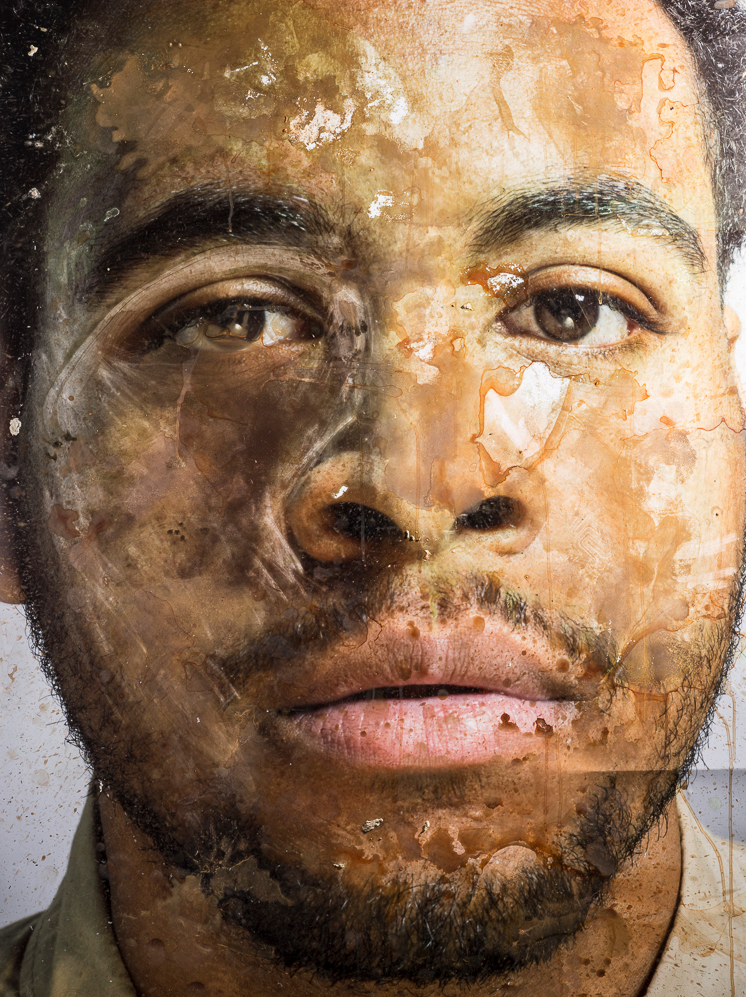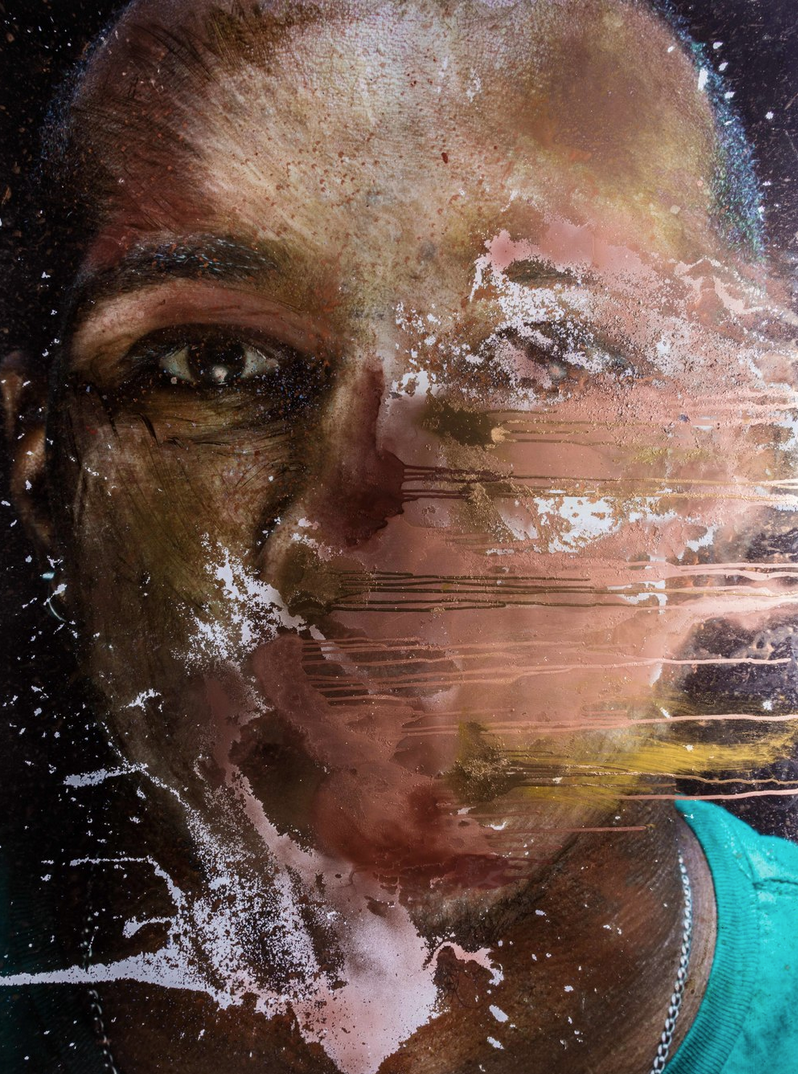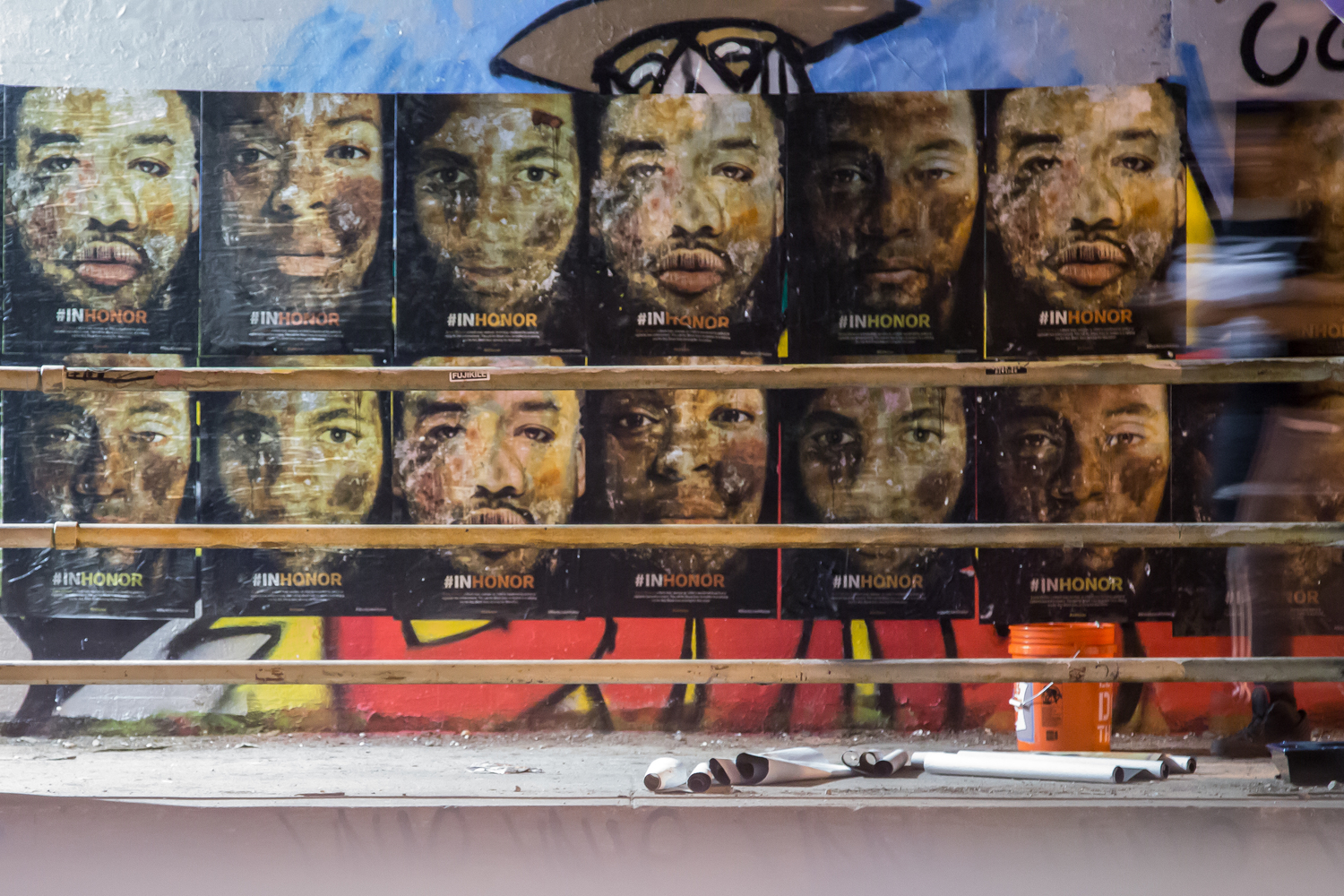Q&A: Ervin A. Johnson
By Jess T. Dugan | October 15, 2015
Ervin A. Johnson was born and raised in Chicago, Illinois. After graduating from the University of Illinois-Urbana Champaign with a bachelor's in Rhetoric he received a second bachelor's in Photography from Columbia College Chicago. He received his MFA at the Savannah College of Art and Design in Atlanta. His work describes what it means to exist as a gay Black man in America. In Project Genesis, he re-imagines his cultural and racial identity through mixed media photography and video. His most recent project, #InHonor, is a series of photo-based mixed media portraits made to honor Blackness as it exists in its various forms. Begun as a personal response to the killings of Black people across America, #InHonor is a powerful protest against police brutality and racially motivated violence.
Jess T. Dugan: Tell me about your project #InHonor. What motivated this work, and how did it begin?
Ervin A. Johnson: I began #InHonor as a personal response to the killings of Black people across America. To be completely honest the work was born out of guilt. All of my friends had rallied up in arms to march for Trayvon Martin and Eric Garner. I, on the other hand, was nowhere to be found. I felt guilty. I consider myself, for the most part, a conscious individual and so my silence became a burden. When the time came for me to be vocal with my peers I chose the path of cowardice. What real change would come of my presence as a young gay black man at a march in which half of my people don’t accept or acknowledge me? Still, though, I felt moved to do something. Whether or not I was accepted was something I had and will always deal with; I had to come to terms with that before anything else.
JTD: Your work is photographically based, but incorporates elements of painting and other media. Why do you choose the materials that you do, and how do these materials affect the final work?
EAJ: I spent three years honing a mixed-media photo technique, while pursuing my MFA at SCAD, in which I would exert physical force on the photographs to describe and discuss various hardships of my life: coming out, being a black man, hurt, loss, loneliness, etc. That technique seemed perfect for the subject matter. In each portrait that experience is visible, especially in the eyes, they are confrontational and unwavering. The physical part is taxing. I lock myself from the outside world and meditate on the tragedies that seem like a constant part of American life. I get on my hands and knees and remove the pigment from each face and then violently renegotiate them until I feel that I can do no more. It’s as much as a psychological experience as it is a physical exertion of aggression and frustration.
JTD: #InHonor has two phases, the second of which involves placing your images in public settings. What is your motivation for the street component of your work? How has it manifested so far? How has it been received?
EAJ: #InHonor exists for the public and so it made sense for the work to move out into these public spaces. Phase 2 of #InHonor began in Atlanta in mid May 2015 at the infamous Krog St. Tunnel, a legal space for street artists to display and make work. I knew that placing the work in that tunnel would be unwelcomed, mainly because the graffiti artists view that space as private. However, given the spirit of the work and the message I thought that the response to it would be good. It was not. In the after photographs you can see that they attempted to remove the posters as well as write derogatory phrases over them. This was something I was expecting given that the work’s main goal is to facilitate and generate a discussion. It did that in the end, despite however negative it became. What was most interesting though was that everyone else that passed through the tunnel responded positively to the work. They photographed it and uploaded it to various social media outlets. That gave me hope.
JTD: We are obviously living in a very difficult, charged moment in terms of race in America. What are you trying to say/do/change/address with your work? How do you feel that it fits into the larger activist sphere working towards social and racial justice?
EAJ: The most important aspect of this work is the honoring of Black life. Of course all lives matter. That is a given. Black life, however, is precious. Our bodies have a tragic and equally powerful past. They have been objectified, abused, sold, beaten, stolen, etc. I have found power in my investigations of “Blackness” and what it means for me. There are so many forces at work telling me constantly that I don’t matter, either because I’m Black or because I’m gay. Through my work I’ve built for myself a place of power to declare who I am and how I want to be seen, shaping for myself a new reality. It is my deepest wish that others find power in the place that I have built for us. We are all beautiful and wondrously made.
JTD: How does your identity as a black gay man affect your work?
EAJ: It does so greatly. I cling to that part of my identity because through it I’ve shaped my reality. A lot of my work functions as a personal investigation of self. For a long time I did not know who I was or where I was from. Through my work I began to realize that I could shape for myself whatever reality I wanted. I could be as powerful as I would allow myself to be, despite what outside forces would have me believe about myself. More importantly though is that through the work I want others to know about the power they possess.
JTD: Who are some of your influences? Where do you find inspiration?
EAJ: Artistically I’ve always responded to controlled forms of chaos, whether they are Kehinde Wiley’s paintings or Mapplethorpe’s abstractions of the Black male body. I also am drawn to Basquiat's work and its immense complexity.
JTD: What’s the next step for you, both artistically and personally?
EAJ: Artistically #InHonor has all of my focus. I really want this body of work to be a major movement visually. It needs to be everywhere and seen by everyone for it to function properly. I will continue with both phases of work in every city I can get to. The posters are also available online on my website via Dropbox. So, if anyone wants they can download, print them out, and distribute at their discretion. Personally, I’m not sure, but I’m open to wherever life plans to take me. I trust in myself and in my work and the rest just falls into place.
All images © Ervin A. Johnson



